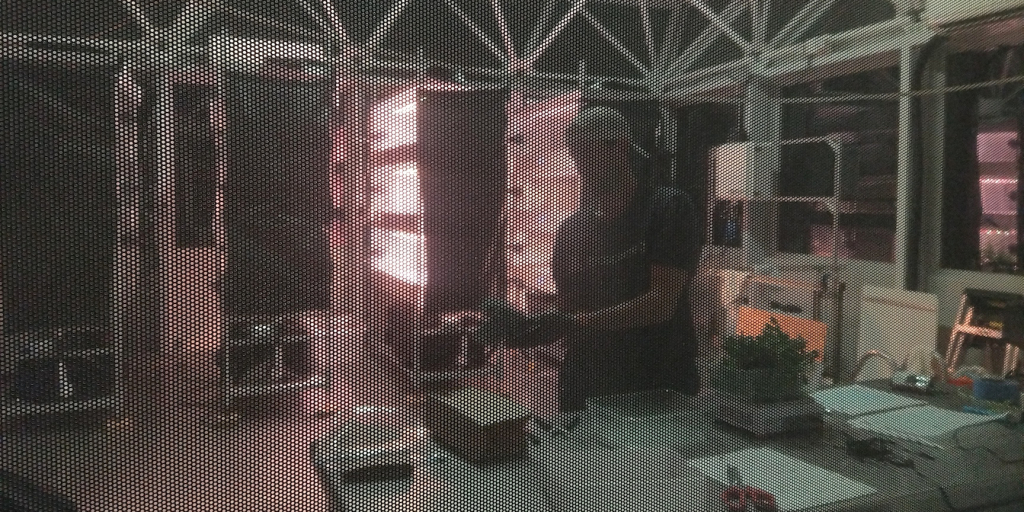
SAM team member Matthias beach has been sealed inside of the SAM vessel for one week. His days are filled with a variety of tasks: eating, exercising, writing in a journal, completing surveys for one or more World Biggest Analog projects, recording video logs, monitoring 144 dwarf pea plants growing in four hydroponics racks, and overall maintenance of this SAM facility.
What makes otherwise mundane tasks unique is the attention to detail. Breakfast is not just warming up water for a bowl of oatmeal, but recording the mass of every bit to be consumed (water, oats, powdered milk, bagel, cheese, etc.). This is a time consuming process that is fundamental to the research endeavor.
Matthias’ carbon dioxide generation, a natural part of human metabolism, is directly affected by a variety of factors such as the amount of sugars and carbohydrates in the foods consumed, hydration, exercise, and sleep. Where Matthias is spending his time increases CO2 levels in that module (Lung, Test Module, Engineering Bay, Crew Quarters) until the higher concentration diffuses toward an equilibrium. His very movement around SAM changes the distribution of CO2 as his body acts as a circulation engine. We can see this when monitoring the four SIMOC Live sensor arrays, one for each module.
Today, at the close of week one, Matthias begins to harvest the 144 pea plants. His first priority is to deliver 48 plants, through the airlock, to Luna and Atila who will process the plants outside of SAM. In concert with Dr. Lucie Poulet and her student Louise, Researchers in Bioastronautics & Life-Support Processes at University Clermont Auvergne, France, the plants are being recorded for their height, wet and dry biomass including the fruit bodies (pea pods) separately, and leaf surface area (as determined with a flatbed scanner). Matthias’ next task is to process the remaining 96 plants inside of SAM, recording height and again, the wet biomass for the plant including the pea pods separately. Later, the plants are dried in the Biosphere 2 bio lab to capture the dry biomass. This requires two full days for one person, and was completed Tuesday evening.
The moment the first pea plant was harvested data collection for CO2 sequestration was terminated as the number of active plants is reduced. With the harvesting of the first 48 plants and air lock transfer, Matthias activated the blower and opened all valves to reset SAM to a nominal 450-500 ppm CO2. This gives us a nearly equal baseline from which the CO2 levels will again rise for the second half of the experiment.
And when the final plant was harvested, the blower was turned off and all valves were closed. In the second half of the experiment Matthias will continue with his measured food consumption, exercise, and sleep schedule such that his activities and associated CO2 generation will be nearly identical, day for day, to the first week in SAM.
As such, we will have, for comparison to our predictions, one week with pea plants and one week without. Without giving away the core of our publication, we are seeing a very strong correlation to the presence of the peas, somewhere between 35-50% reduction in CO2 from our predictions. This estimation is wide, at this point, as we have run quick calculations based on just one of the four sensor arrays, and not yet taken into account the four very different volumes of air in which each sensor sits.
As stated in prior entries related to this project, the end goal is to understand a) the amount of CO2 produced by one human crew member over an entire day, and b) the amount of CO2 processed by one dwarf pea plant, or the CO2 sequestration by one square meter such that we can ultimately inform future space fairing entities the number of food cultivars required to offset the CO2 produced by a crew.

